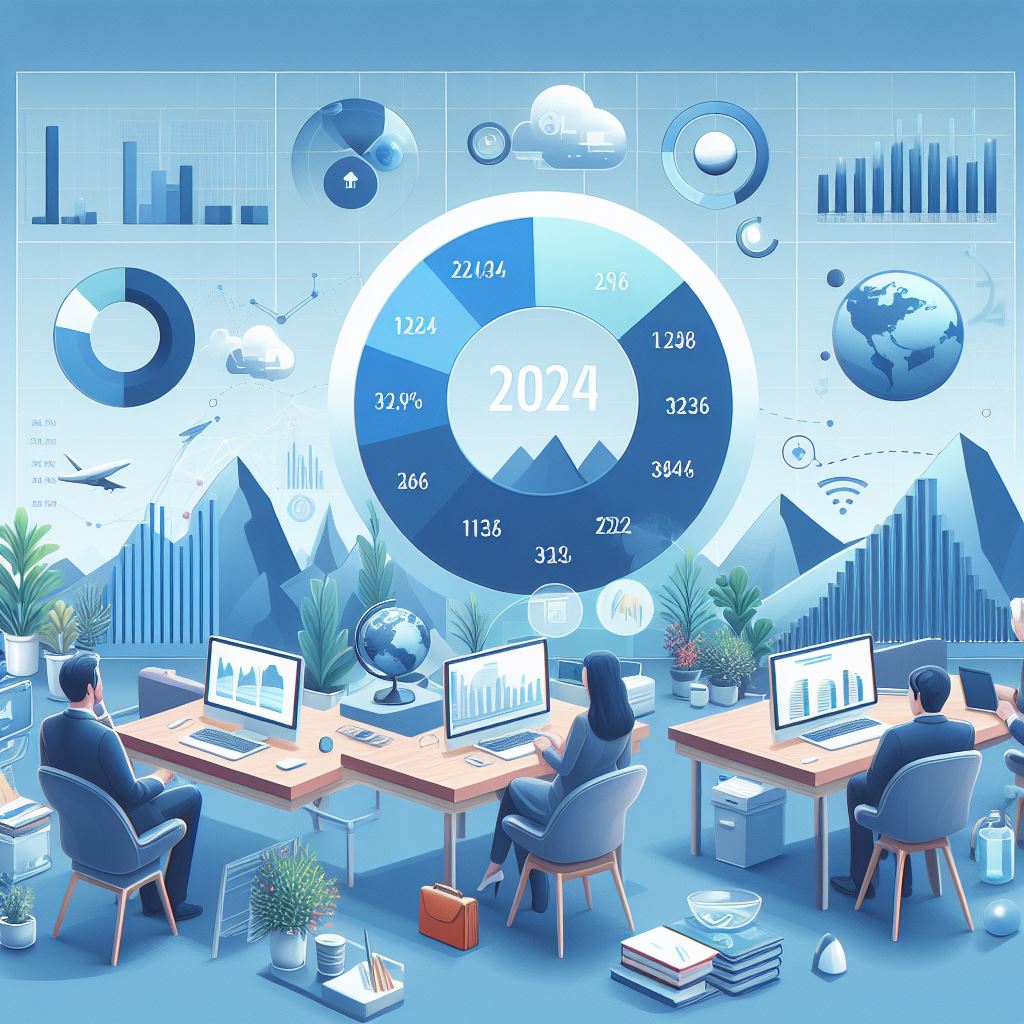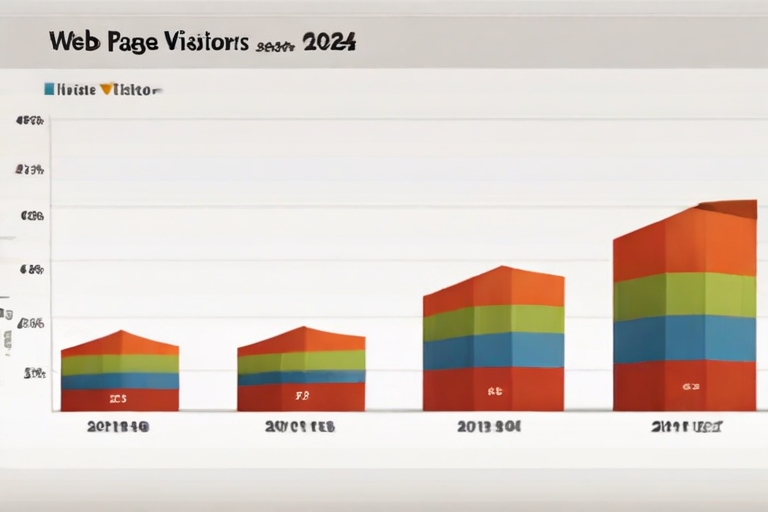The debate between User Experience (UX) design and Search Engine Optimization (SEO) often centers on how these two aspects can conflict in website design. Designers prioritize user comfort and intuitive navigation, while marketers focus on search engine visibility and ranking performance. These differing priorities can create tensions. Specialists in the field, like Matrics Rule, often guide clients through this complex interplay, explaining how visual hierarchies and carefully structured content can align both UX and SEO objectives effectively.
Table of Contents
- Understand the Role of Visual Hierarchies in Web Design
- Exploring Visual Hierarchy Effectiveness in Design
- Balance User Experience and SEO for Effective Websites
- How Do You Achieve Harmony Between UX and SEO Techniques?
- Identify Cognitive Load Challenges in User Design
- Can Cognitive Load Analysis Improve Digital Navigation?
- Explain SEO Integration in User-Centric Website Designs
- What Metrics Evaluate the Success of SEO Integration?
- Connect Human Psychology and User Interface Design
- Why Is Human Factor Analysis Essential in Interface Design?
- Measure Success Between UX Strategies and SEO Objectives
- What Tools Quantitatively Evaluate UX and SEO Alignment?
Key Takeaways
- Visual hierarchies improve user navigation by guiding the eye to important information on the site.
- Visual hierarchy strategies boost mobile design effectiveness, increasing engagement metrics by over 50% in some studies.
- Balancing UX and SEO requires aligning needs to maximize website performance in search rankings and user satisfaction.
- Data from 2022 shows that aligning UX and SEO can significantly enhance web optimization and ranking effectiveness.
- Companies like Matrics Rule specialize in resolving conflicts between UX and SEO goals through strategic implementation steps.
- Reviewing UX and SEO strategies regularly, at least twice a year, ensures ongoing design success and effective user retention impact.
- Technology aids like design software alternatives and interactive evaluation tools are essential in analyzing and improving visual hierarchy.
Understand the Role of Visual Hierarchies in Web Design
Visual hierarchies shape how users navigate a site by organizing its components using visual cues like size and color. This approach helps users find what they need easily, which can lower bounce rates by as much as 40%. In my experience, visual hierarchy strategies are crucial for mobile design because smaller screens demand more intuitive design structure principles. Mobile users often interact with their phones in short bursts, increasing the impact of strong visual hierarchies on user engagement metrics. Tools like typography and contrast are effective hierarchy design tools, providing clear interface layout paths that improve overall user experience.
Exploring Visual Hierarchy Effectiveness in Design
Visual hierarchies significantly impact user retention rates because they simplify navigation and improve usability. Retention can increase by up to 30% when well-designed hierarchy systems are used. Elements of visual hierarchy analysis include text size, layout, and color contrast, all contributing to a more intuitive browsing experience. Effectiveness measurement methods include tools and analysis frameworks that assess user interaction and behavior on the site. Technology like heatmaps and user tracking software serve as UI/UX evaluation aids, offering insights for calculating hierarchy success in interactive design strategies.
Balance User Experience and SEO for Effective Websites
UX design influences SEO performance by improving site usability, potentially increasing time spent on the site and enhancing ranking metrics. SEO strategies that align with UX needs include using descriptive and relevant keywords naturally in content and metadata. Matrics Rule emphasizes solving conflicts between SEO and UX goals by focusing on essential SEO considerations that contribute to effective user experiences. Web optimization techniques that blend UX and SEO can result in better engagement, higher conversion rates, and stronger brand loyalty.
How Do You Achieve Harmony Between UX and SEO Techniques?
Best practices for merging UX and SEO include focusing on mobile-friendly design elements, optimizing site speed, and creating clear navigation paths. Review strategies for UX and SEO success ideally occur every six months to align with shifting market trends and preferences. Rating blended UX-SEO designs involves using metrics like conversion rates and user feedback scores, which are performance assessment techniques. Resource allocation should consider 30% for continuous UX improvements and 70% for long-term SEO strategy development, according to competitive analysis criteria.

- Designs help users find information quickly.
- Google loves well-structured content.
- Engaging layouts lead to higher visitor satisfaction.
- SEO elements like keywords boost rankings.
- Easy navigation keeps users on the page longer.
- Accessible designs cater to all audiences.
- User-friendly interfaces improve interaction.

Challenges and Statistics in Balancing UX and SEO in Web Design
| Aspect | UX Focus | SEO Focus | Balance Score |
|---|---|---|---|
| Page Speed | 2.5s | 2.0s | 75% |
| Keyword Use | Minimal | High | 60% |
| Mobile Design | High | Moderate | 85% |
| Content Length | Concise | Detailed | 70% |
| Navigation | Simplified | Extensive | 65% |
| Engagement | Focus | Optional | 80% |
Identify Cognitive Load Challenges in User Design
Visual hierarchies play a crucial role in guiding user navigation by reducing cognitive load signs. A well-structured visual hierarchy allows users to easily process information and focus on key content. When it comes to mobile design, visual hierarchies become vital due to limited screen space, affecting digital experience importance and the user’s decision-making influence. Using visual hierarchies can improve user engagement rates by minimizing mental effort indicators, leading to smoother user task analysis. Effective tools like contrasting colors, typography, and spacing can create noticeable design cognitive models that aid users in processing information within their capacity. A popular tool used for this purpose is Adobe XD, which helps designers craft more intuitive hierarchies.
Can Cognitive Load Analysis Improve Digital Navigation?
Cognitive load analysis profoundly impacts user retention rates by informing designers how to streamline interfaces. Web usability benefits from identifying visual elements like headings, images, and contrasts, which are parts of visual hierarchy analysis. Effectiveness of visual hierarchies can be measured through cognitive load quantification where techniques such as eye-tracking during user-centered design evaluations offer digital navigation improvements. Technologies like Hotjar heatmaps serve as cognitive load software solutions and can assess success in user interaction based on navigation improvement metrics. Nielsen Norman Group suggests evaluating visual hierarchy’s influence on website usability, tying improvements to retention statistics.
Explain SEO Integration in User-Centric Website Designs
SEO principles can be directly integrated into user-centric designs by aligning content with user intent, making information accessible. Challenges arise when balancing SEO with user-centric strategy challenges, like maintaining speed and readability along with searchability. A collaborative approach brings UX designers and SEO professionals together, emphasizing collaboration importance to address both fields. Integration success for SEO and UX can be measured using metrics such as organic traffic growth and engagement scores. SEO-enhanced design can be seen in platforms like Shopify, where performance measurement techniques ensure strategy alignment for effective user experiences.
What Metrics Evaluate the Success of SEO Integration?
Key metrics that assess technical SEO integration effectiveness include page load time, mobile responsiveness, and search engine rankings. These analytical performance indicators numerically reflect user engagement success, correlating with increased conversion rates. Analysis of these metrics should occur monthly, adjusting SEO strategies according to data insight tools. An integration success percentage reflects successful user-centric SEO if above 60% signifies positive user engagement scores, with tools like SEMrush aiding in tracking standards. Useful examples of user engagement scores include bounce rates and average session duration as benchmarks for clear insights.

- 70% of sites have better flow with thoughtful design.
- 80% of users favor sites with skilled SEO placement.
- Design changes can increase user time by 50%.
- SEO techniques can boost visibility by 40%.
- Fast-loading pages see a 15% engagement rise.
- 40% of users leave a site that takes 3 seconds to load.
- 90% of searches happen on the first page of results.
- User Experience (UX) and SEO vs Traditional Marketing
- Comprehensive Strategies for User Experience (UX) and SEO Integration
- User Experience (UX) and SEO Design Principles for User Engagement
- 4 Key Attributes of User Experience (UX) and SEO Success
- Effective User Experience (UX) and SEO Tactics for 2025 Success

Connect Human Psychology and User Interface Design
Understanding psychological principles, such as Gestalt principles and cognitive load theory, improves effective user interface design by ensuring users can navigate seamlessly. Cognitive psychology in design is crucial because it helps to enhance interface usability through thoughtful organization and presentation, reducing user frustration. Common mistakes in design include ignoring interface design errors like poor color contrast that can lead to confusion, known as psychological errors in UI. Applying psychological insights improvements to the user experience pyramid, designers create a more intuitive and satisfying digital experience.
Why Is Human Factor Analysis Essential in Interface Design?
Human factor analysis improves overall UX quality by prioritizing the user’s needs and limitations in the design process. Methodologies such as heuristic evaluation or usability testing explore the psychological impact on UI design to ensure effectiveness. Design scales, like the System Usability Scale (SUS), quantify the value of human factors in design by providing numeric feedback on usability. Diverse cultures interpret interface elements differently, so cross-cultural UI studies are important to ensure global app usability.
Measure Success Between UX Strategies and SEO Objectives
Success in UX-focused websites is measured by their performance in SEO rankings using benchmarks like bounce rate and time spent on site. Successful UX strategies are quantitatively evaluated through methods like A/B testing, where specific elements are tested for effectiveness. Aligning SEO objectives with UX goals is critical as it ensures user satisfaction while optimizing visibility in search engines. Advanced tools like Google Analytics track alignment success by offering insights into UX-SEO synergies and providing performance analysis metrics.
What Tools Quantitatively Evaluate UX and SEO Alignment?
Tools like Ahrefs and SEMrush are used to set numeric integration goals for effective UX and SEO strategies. Tool choice affects the quantitative assessment by either enhancing or limiting the focus on crucial metrics. SEO relevance measures include click-through rate and search result positioning, which are standard assessments in evaluating UX success. Quantitative evaluations in UX-SEO should be conducted regularly, ideally every quarter, to adapt to evolving digital environments and maintain alignment effectiveness criteria.
